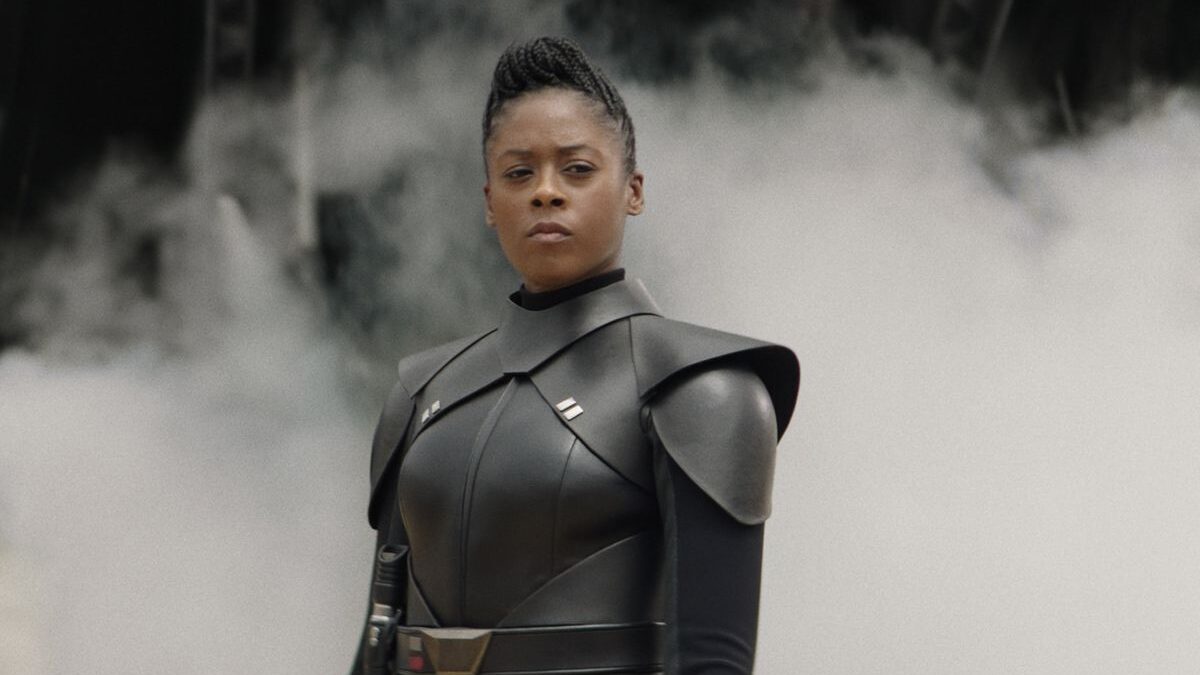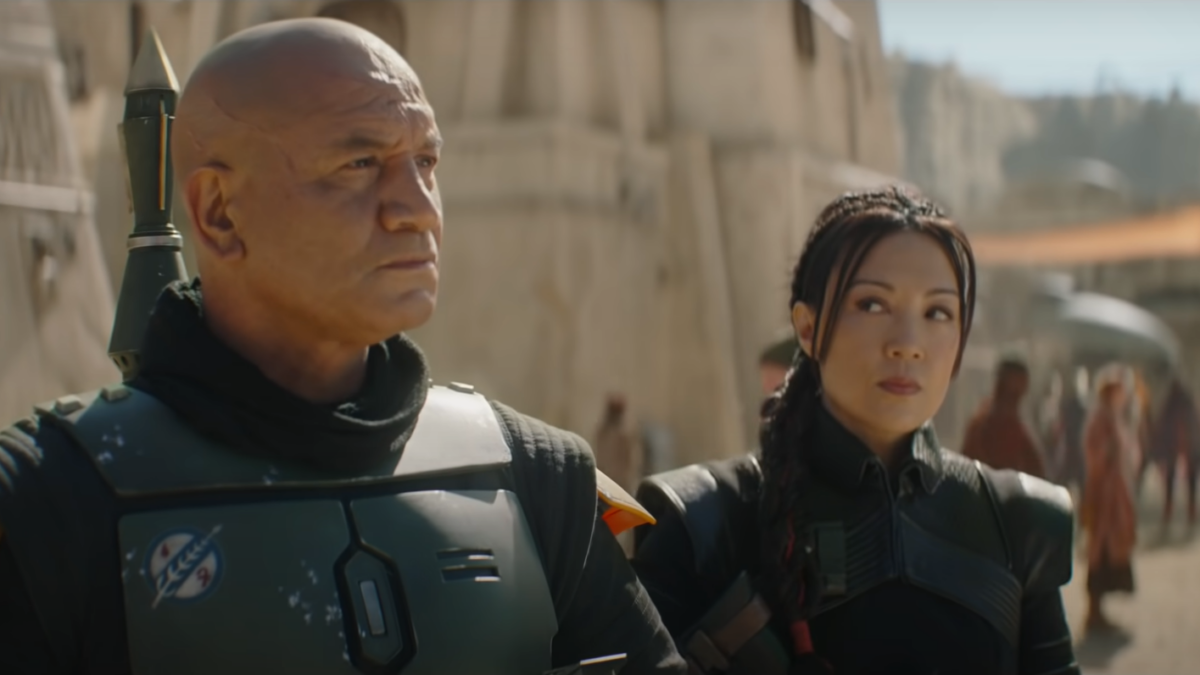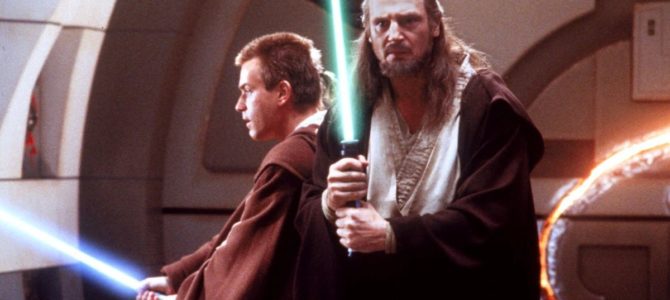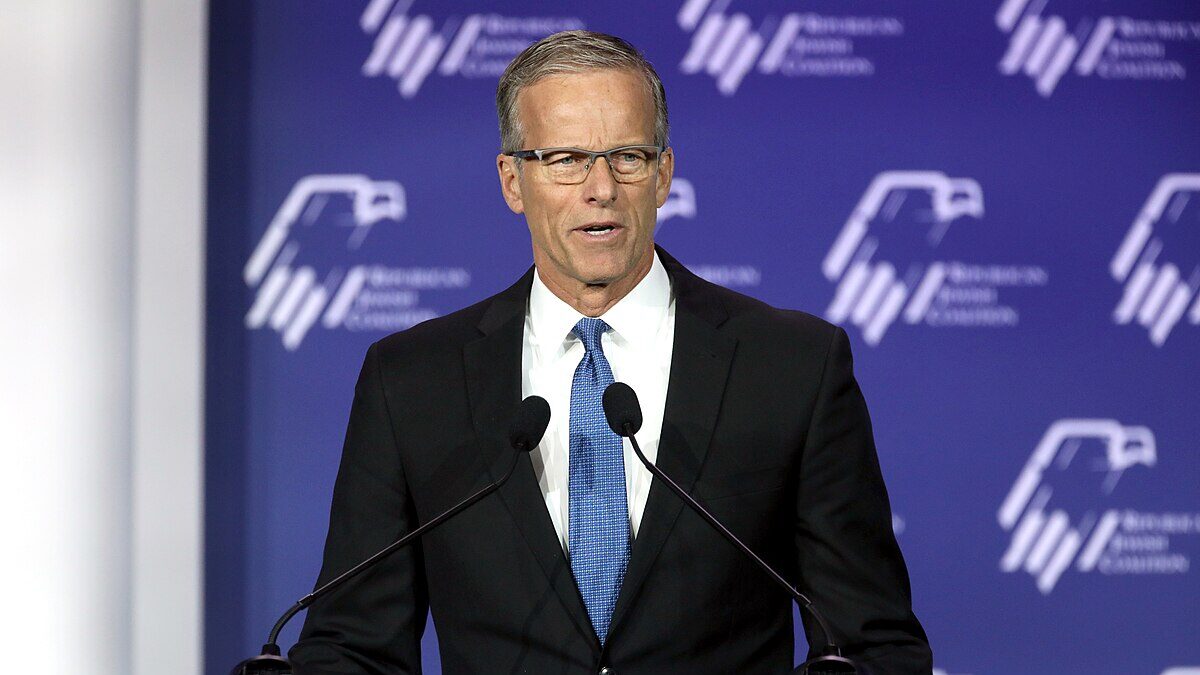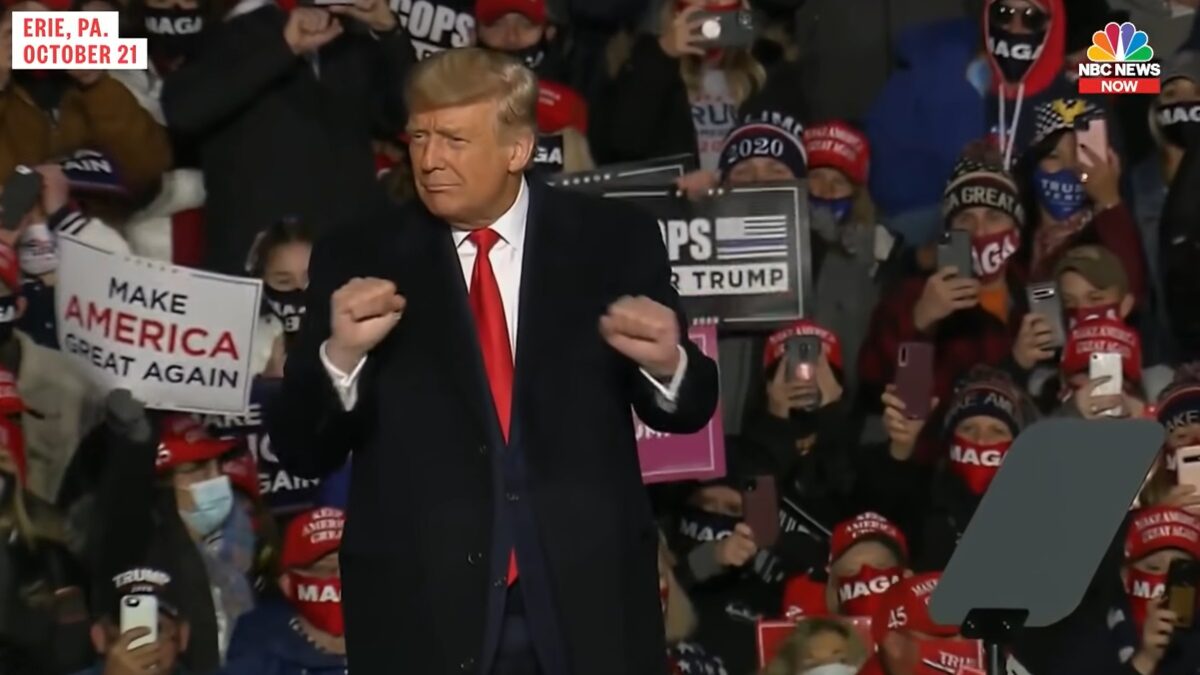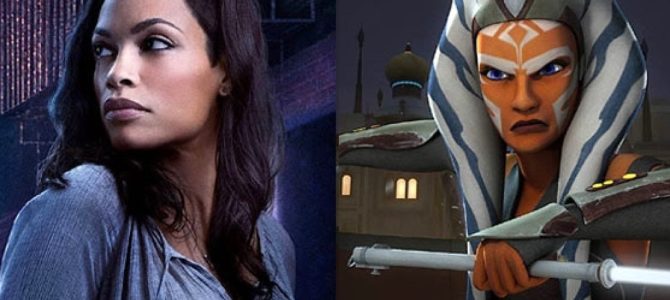
Last week, Slash Film had the scoop that genre TV star Rosario Dawson (“The Defenders,” “Briarpatch“) will be featured in season two of “The Mandalorian,” which recently wrapped filming and is slated to premiere in October on Disney Plus. Two others have been announced to join the cast, Michael Biehn (“Aliens”) as a bounty hunter from the lone gunman’s past and WWE star Sasha Banks in an unknown role.
Multiple sources have confirmed that Dawson will appear as fan-favorite character Ahsoka Tano, previously seen in hours of animated Star Wars episodes over the past decade. Introduced in “Star Wars: The Clone Wars” animated series, and its lesser-quality companion film, Ahsoka spent years as a Jedi Padawan under Anakin Skywalker.
Ahsoka’s Ups and Downs
Fans initially reviled the character created by Dave Filoni and George Lucas for her hasty personality and often exasperating dynamic with her master. Over years, as producers honed her character traits of creativity, empathy, and self-sacrifice, popular opinion on Ahsoka shifted.
News of Ahsoka coming to “The Mandalorian” reveals two things about the Western-style space opera serial. It signals that series producers Jon Favreau and Filoni will forge stronger links to the Star Wars “canon” established in recent years. Leaning into the Lucasfilm Story Group contrasts with recent theatrical film “The Rise of Skywalker,” the end of a trilogy with no planned structure, and it surely shows in that mess of a film.
The casting also tells fans they can hardly predict where the bounty-hunter-in-space serial will go next. Centered on Pedro Pascal’s masked character, who is sworn protector of The Child, a.k.a. “Baby Yoda,” the series already features first-rate female warriors in Cara Dune (Gina Carano) and a mysterious mercenary played by Ming-Na Wen. Where Ahsoka Tano fits in, now likely in her mid-forties, will be a point of speculation as trailers release in coming months.
Season one of “The Mandalorian” has gotten a boost from families stuck at home, currently the second most in-demand streaming series despite Disney Plus being a new platform. Can the big-budget series deliver again? And what do the animated Star Wars series portend for future stories in the galaxy far, far away? The questions are worth exploring. (Some spoilers follow.)
Resurrecting ‘Star Wars’ After the Prequels
When George Lucas’ prequel trilogy was at its height, his team hired a popular anime-style director who created short vignettes for Cartoon Network. However, it veered from the Lucas vision of Star Wars and needed more narrative substance.
At the time, Nickelodeon’s “Avatar: The Last Airbender” presented a new paradigm for TV animation. Its season one appeared at first to be a typical Saturday morning kids cartoon, albeit with greater aesthetic style. Then, a few episodes in, viewers realize the characters’ journey has evolved into a much grander-scale story.
One of that show’s emerging behind-the-scenes talents, Filoni, happened to be a rabid Star Wars fan—the kind who dressed up in Jedi robes to attend opening-night premieres. Lucas soon hired Filoni to collaborate on a “soft reboot” of “The Clone Wars” concept.
Premiering in 2008, it expanded on events between Episodes II and III of his theatrical films. Developing the master-padawan relationship between Obi-Wan and Anakin, it introduced a trainee for young Skywalker: Ahsoka Tano, soon elevated as the show’s protagonist.
Add to Watchlist: 12 Years of Animated ‘Star Wars’
No one could’ve predicted that Filoni would sustain “Star Wars: The Clone Wars” for 126 half-hour episodes over seven seasons. Winner of multiple Emmy Awards, the series veers from high-concept fantasy tales to emotional interpersonal conflicts, from war stories heavy on strategic military tactics to moral dilemmas.
Without question, it borrows countless elements and characters from the two preceding Star Wars film trilogies: iconic music themes by composer John Williams, ship designs, locations, and much more. Lucas drew on his love of “Flash Gordon” serials, setting up each episode with a 1930s-style sci-fi narration, which Filoni kept even when Lucas’s involvement faded.
“The Clone Wars” became more than the sum of its parts. Every script was designed to be consistent with the complex Star Wars universe in the films, while pushing the boundaries of its storytelling tropes. Once fans followed for multiple seasons, the series altered perceptions of the prequel trilogy. Gradually those big-screen stories, even with noticeable flaws, took on new meaning. At the center of it all was Ahsoka, a lowly apprentice transformed into a cunning warrior.
When Disney bought Lucasfilm in 2012, they promptly cancelled “The Clone Wars” series. Seeing the value of the property and its rabid fan base, Netflix brought it back for a sixth season in 2014. Concurrently Disney Channel premiered “Star Wars: Rebels” co-created by Filoni. Set five years before 1977’s original “Star Wars,” the four-season animated show introduced a young crew of misfits seeking to thwart the Empire by helping to organize the Rebel Alliance.
Clearly geared to a younger audience. “Rebels” has less focus on battle tactics and more on tween-friendly self-discovery. Still, again following the model of “Avatar: The Last Airbender,” it has a lot going on beneath the surface once viewers get past introductory stories. Upon showing up at the end of season one, Ahsoka Tano drives much of the plot forward.
She faces her old master, now Darth Vader, in a story arc widely praised for its dramatic depth. In the closing moments of season four, which leaps forward in time to the end of the original Star Wars trilogy, Ahsoka heads out on a search for a missing ally. This post-“Return of the Jedi” era is also when “The Mandalorian” is set.
Starting on February 21, Disney Plus began releasing the seventh and final season of “The Clone Wars,” which concludes in May. (It’s currently the third most in-demand streaming series.) Showrunner Filoni, now head of Lucasfilm’s animation division, is finally getting the opportunity to finish storylines he began 12 years ago.
Disney Plus Has Made ‘Star Wars’ Its Cornerstone
Late last year, a largely unnoticed phenomenon occurred among millions of Gen X and millennial families with children at home. Young parents, teens, kids as young as eight, and even old-school Boomer fans found time to sit together and watch each new episode of “The Mandalorian” every weekend for two months.
It was like a throwback to “Bonanza” in the 1970s, when 40 percent of U.S. households often tuned in to the same show on Sunday nights. In an age when everyone narrow-casts favorite shows and YouTube channels, it revealed the power of Star Wars to bridge generation gaps.
The season one finale, though, left some casual fans scratching their heads when villainous Moff Gideon wielded what is called the dark saber. Where did he get it, and why does it matter? The weapon had appeared in several story arcs of both “The Clone Wars” and “Rebels” animated series—all linked to Ahsoka’s journey.
After “The Mandalorian” became must-see TV, viewers stuck at home lately have discovered those two animated serials on Disney Plus. While the family-focused streamer has had challenges, including technology hiccups at launch and some beloved Disney legacy titles missing, Star Wars fans have found much to enjoy.
Similar to all TV shows, plans for the various Disney Plus original series may be affected by the coronavirus crisis. A final European shoot for “The Falcon and the Winter Soldier” has been delayed, making its August release uncertain. Shooting has wrapped on “The Mandalorian” season two, yet it’s unknown if special effects work remains on track for October release.
One thing fans can count on in the Disney era of Star Wars. Even though “The Rise of Skywalker” was billed as the final chapter when it hit theaters in December, there’s no end in sight for stories that explore the Star Wars universe. The Force will be with us, always.


